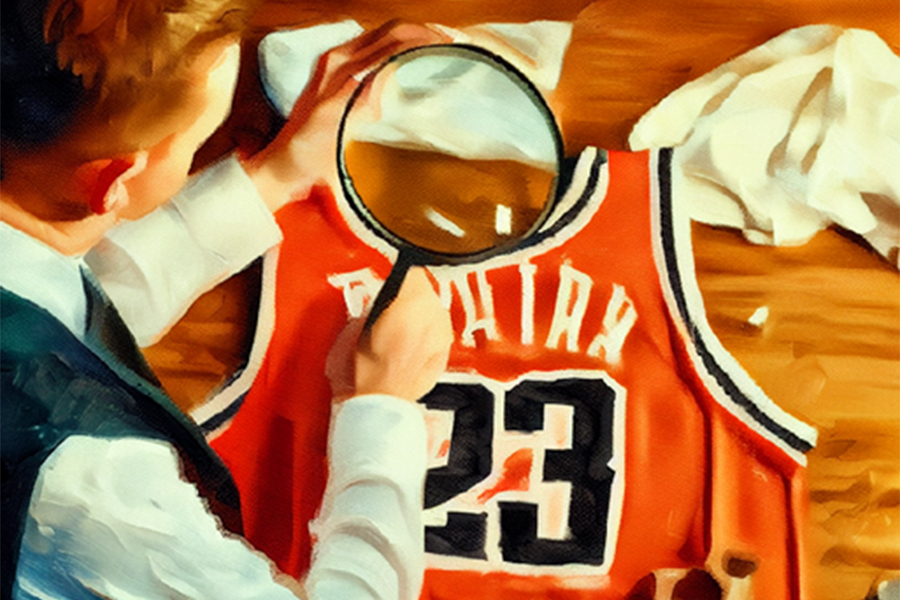In the heat of a passion-fueled bidding war, it’s easy to overlook–willfully or not–the impact of various incidental costs that might accompany such a purchase. But what if overlooking those costs means millions more in expenditures than expected?
Once the adrenaline dissipates, a nagging headache will surely take its place.
New and seasoned collectors alike can sometimes experience the unwelcome realization that a winning bid is merely the beginning of an extensive exercise in depleting their bank accounts. To determine the appropriate budget for a long-pursued target, it’s helpful to consider the various costs associated with the purchase before the bidding begins.
Put differently, a collector might be inclined to stop raising that bidding paddle earlier than initially planned.
These costs need not stand between a collector and the object of their desires, but understanding them and how to reduce them thoughtfully where applicable can provide peace of mind.
Auction Fees
Collectors should pay close attention to the specific fee structure at each auction house when purchasing an item at auction. These terms can vary, resulting in significant differences between the hammer price (the winning bid) and the final sale price. A misunderstanding or ignorance of these fees can lead to the ultimate sticker shock.
The largest fee for buyers is typically the buyer’s premium. These fees can vary by house and by the amount of the winning bid. It’s common to see buyer’s premiums amounting to approximately 20% of the winning bid, and many houses will assess that same fee regardless of the magnitude of the hammer price. Other houses use a tiered structure. At Sotheby’s, for example:
- Buyer’s premium is 27% for hammer prices up to and including $1,000,000
- Buyer’s premium is 22% for the amount of the hammer price in excess of $1,000,000 up to and including $8,000,000
- Buyer’s premium is 15% for the amount of the hammer price in excess of $8,000,000
In practice, this means that the winner of a lot with a winning bid of $10,000,000 would pay 27% on the first million, 22% on the next seven million, and 15% on the final two million. That amounts to $2,110,000 in total buyer’s premium (21.1%) and a final sales price of $12,110,000.
Think of the buyer’s premium like the tipping screen at your local coffee shop, just mandatory and vastly more expensive.
Some houses charge additional, smaller fees, and payment processing fees may add further to the invoice depending on the payment method. Sales tax, though not a fee, also increases costs. Whatever the auction house’s policies, fees can transform a winning bid into a vastly higher purchase price for the buyer.
Bidders should proceed carefully to avoid unwanted and expensive surprises.
Shipping Costs
After purchasing your prized item, it’s time to take delivery at your preferred destination. Shipping costs can vary considerably depending on the size and value of the item, the place of origin, and the speed. In some cases, auction houses offer complimentary shipping services, complete with insurance for the transit. In others, buyers shoulder these costs in their entirety. As many valuable items treasured by collectors can be large and fragile, a higher tier of shipping service may be desired, which also comes with higher costs.
For one-of-one items like works of art, buyers have no optionality in their choice of auction house; they must bid wherever the desired work is available. However, for other items that are more easily substituted, buyers may consider the favorability of terms and shipping arrangements.
It’s also worth noting: shipping insurance can often cost approximately $1 per $100 of value, meaning that buyers footing this bill will add another 1% to quickly rising costs. However, it is a necessity, as the various risks of transit are too significant to entertain the possibility of shipping these valuable collectibles without protection.
Insurance Costs
The risks don’t end once an item arrives. The item merely becomes yours to protect.
Recent and vast destruction caused by hurricanes and wildfires underscores the importance of insuring collections. It’s exceedingly difficult for collectors to physically protect their collections from these unpredictable and unpreventable disasters, particularly when they prefer to enjoy their collections in their own homes. As a result, financial protection is a must-have for peace of mind.
Of course, for expensive collections, insurance premiums can be similarly expensive. While annual premiums often fall in the range of 20-to-50 cents per hundred dollars of value, those costs can add up on large collections, particularly those with higher risk factors. Premiums can vary based on the storage environment, security measures, and travel. Pieces stored in very safe, climate-controlled facilities may incur lower premiums than those stored at home with less security or those that frequently travel for exhibitions.
Storage Costs
For certain collections, particularly items smaller in size like trading cards, storage considerations may be less extensive than for large works of art or other sizable memorabilia items. To ensure items remain in their best possible condition, various measures may be required, from protection from UV light to climate control. Collectors can implement some of these measures for home display–at a cost.
In other cases, particularly when certain pieces aren’t actively displayed, collectors may prefer a specialty storage facility, as is common among art collectors. Larger collections can incur hundreds or even thousands a month in storage costs, and transit and installation costs can be cumbersome as works are rotated between the home and storage.
Pre-purchase, it’s worth considering where a collector might store a piece, what incremental accommodations might be necessary, and what those accommodations might cost.
The difference between the price that sends the auctioneer’s hammer toward the gavel and the ultimate costs incurred by collectors can be significant. Rarely will that difference prevent a collector from acquiring their grail, but collectors should still be mindful of the complete financial picture when budgeting for an important purchase or considering the growth of their collections. It may impact how they allocate resources, ensuring the availability of sufficient dry powder to chase those grails as they surface.
Destiny Family Office works with ultra-high-net-worth collectors, offering services tailored to their investments, families, and passion assets. By understanding what’s most important to you, we can help you navigate complexity, simplify your life, and achieve peace of mind.
If you have a valuable collection you’d like to include in your financial, tax and estate planning, contact our Destiny Family Office team today. And don’t forget to self-assess your planning to date by completing our Collectibles Scorecard.




